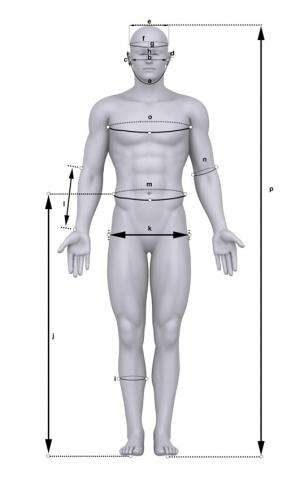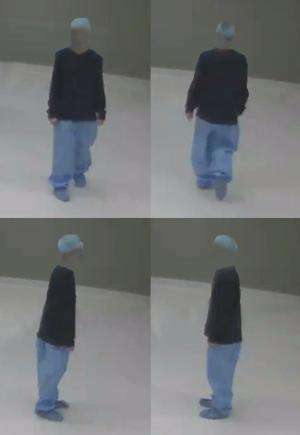"Body recognition" compares with fingerprint ID

(Medical Xpress)—University of Adelaide forensic anatomy researchers are making advances in the use of "body recognition" for criminal and missing persons cases, to help with identification when a face is not clearly shown.
PhD student Teghan Lucas is studying a range of human anatomical features and body measurements that can help to identify a person, such as from closed circuit television (CCTV) security videos, no matter what clothing the person may be wearing.
"There's been a lot of work conducted over the years on facial recognition. This makes sense – humans have evolved to recognise faces, which is part of our survival mechanism, and the face contains some very distinctive features. But what happens if the face is not shown, or if there is an unusual facial resemblance between two people? What happens if identification of the face alone just isn't enough?" Ms Lucas says.
"Measurements of the body, as well as the face, were used for forensic identification as early as the 19th century. It was believed that no two individuals had the exact same measurements. However, this was overtaken by fingerprint analysis because it was considered more reliable in court proceedings, and the probability of finding matching individuals could be easily calculated."
However, Ms Lucas says body recognition has the potential to be more widely used in identification cases. "Despite what television and the movies would have people believe, there is often a lack of good quality video evidence. Criminal cases usually involve a deliberate attempt to cover the face, or fine details can't be seen," she says.
Part of Ms Lucas's research has involved using a database of anatomical measurements of almost 4000 US armed services personnel. "We compared eight facial and eight body measurements to investigate whether or not there is enough information on the body to use for identification. Results consistently show that compared with the face, less body measurements are needed before eliminating duplicates and achieving a single ID match. The larger the range of each of the measurements, the less chance there is of finding a duplicate.

"With a combination of eight body measurements it is possible to reduce the probability of finding a duplicate to the order of one in a quintillion. These results are comparable with fingerprint analysis," she says.
"In our experience, the body is more variable than the face and should be used in identification more often. Another advantage to using the body is that larger dimensions are easier to locate on images and not affected by facial expressions."





















